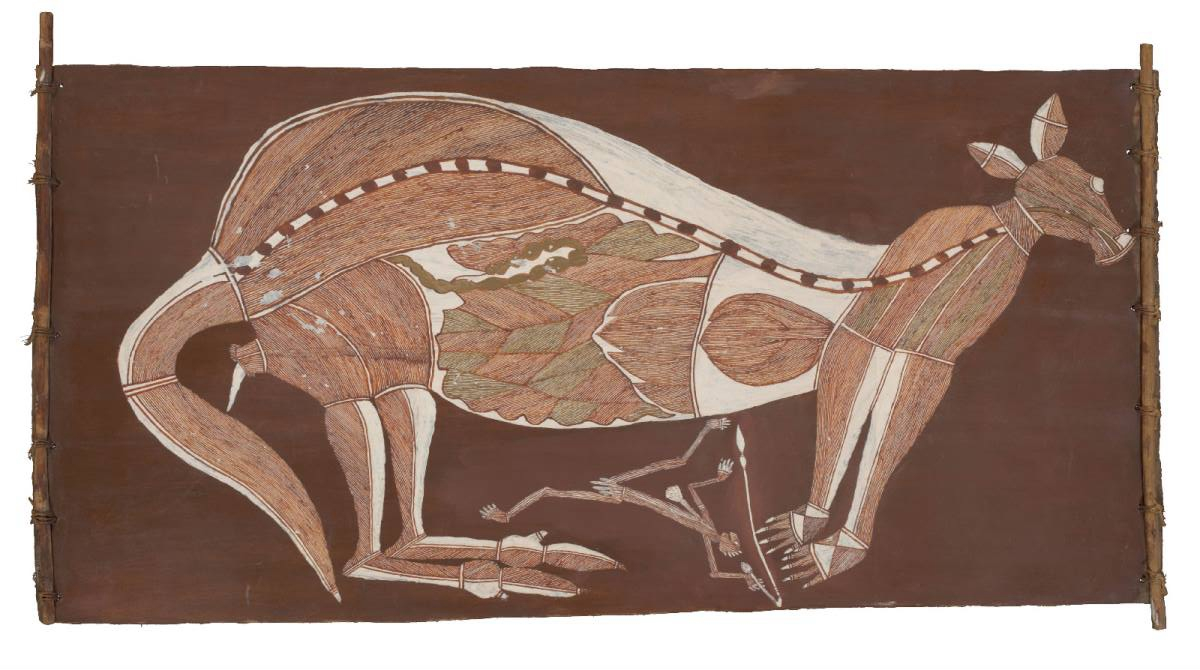
File of bark painting by Australian aboriginal people (Photo: Australian Embassy Photo)
Delicate and rare bark paintings from the National Museum of Australia's signature collection are headlining an unprecedented exhibition of Arnhem Land artworks at the National Museum of China. The curator hopes Chinese viewers will be fascinated by the depictions of Australian plants, animals, and Indigenous culture.
"The Old Masters: Australia's Great Bark Artists" exhibition features over 150 artworks and objects, informing visitors of the exotic bark painting tradition of Aboriginal people. The works were created by Aboriginal people living in the western, eastern and central parts of Australia's subtropical northern Arnhem Land.
The exhibition features 123 bark paintings, 18 carvings, 10 painting tools and three log coffins.
Like almost aboriginals living in Australia, Arnhem Land people don't have a written language, so they have recorded their sacred and secular life and history with rock paintings or bark paintings.
The bark is stripped from eucalyptus trees during the wet season, then cured over the fire and flattened under weights. Paint is made from red and yellow ochre, charcoal and white clay.
It may be hard to decipher many of the paintings, but according to their descriptions, we know they are about their gods, rituals, huts and natural phenomena like fire and floods.
Although the earliest bark painting still in existence now dates back hundreds of years, the designs and patterns on the paintings hint at the very beginning of the Aboriginal people because the patterns have also been painted on people, dead bodies, and coffins.
Aboriginal and Torres Strait Islander Community have inhabited the Australian continent for at least 65,000 years. Their rich and diverse culture is reflected in the barks' intricate designs.
This Old Master bark painting exhibition was first exhibited at the National Museum in Canberra in late 2013. It's the first time the exhibition is touring outside the museum and the country.
“We are tremendously excited to have this exhibition here at the National Museum of China in Beijing. This is the first time this collection of works have ever left Australia. And it's very important that it comes here, to a great nation with a very proud history," said Dr. Mathew Trinca, the director of the National Museum of Australia.
"And it's a testament to the collaboration between the National Museum of China and the work of my staff of National Museum of Australia have done in recent years. These are the treasures of our nation when you want to open your heart to friends; you share the things that mean the most to you,” he added.
All works presented at the exhibition were created between 1948 and 1985. That's after missionaries, anthropologists arrived in the region, and they bought a lot of works from the people who made this art known to the outside world.
Late masters featured at the exhibition include David Malangi, whose image of the burial of an Ancestral Hunter was reproduced on the country's one dollar note, and Nguleingulei, whose paintings were reproduced on the 75-cent Australian stamp.


